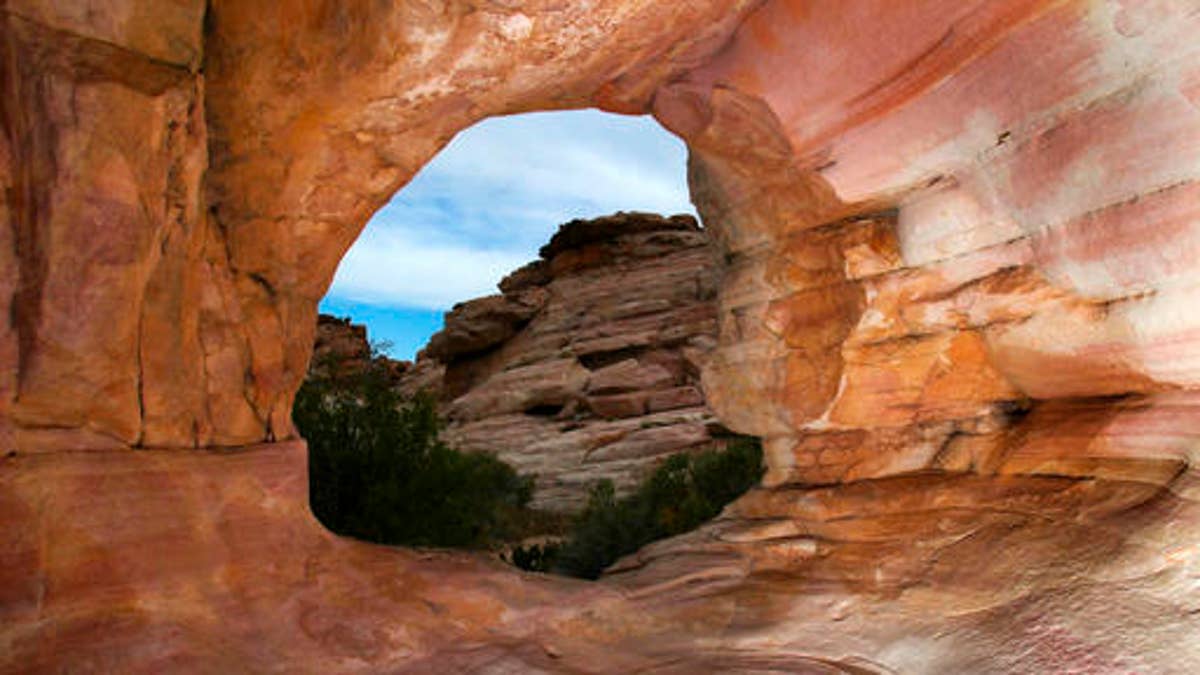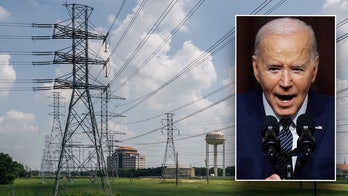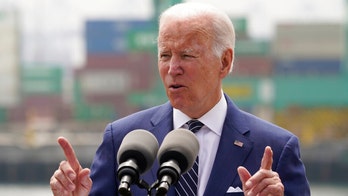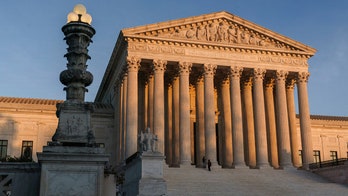President Trump directs a review of national monuments
The executive action orders a reassessment of any monument designation made since 1996 that is over 100,000 acres in size; Doug McKelway takes a look at both sides for 'Special Report'
President Trump’s executive order on Wednesday for the Department of the Interior to review two dozen national monuments created by several of his predecessors has garnered widespread praise from many western state lawmakers, anger from conservationists and Native American groups and raised the question of whether one executive has the power undo the decisions of a previous White House.
Speaking during a signing ceremony at the Interior Department, Trump derided the national monument protection efforts of the last three presidents. He called them “a massive federal land grab,” while specifically criticizing President Obama’s use of the Antiquities Act as a way to “unilaterally put millions of acres of land and water under strict federal control.”
The 1906 Antiquities Act authorizes the president to declare federal lands as monuments and restrict their use, but Republican lawmakers in western states like Utah have been hostile to the use of the act by Presidents Obama, Clinton and George W. Bush – claiming the designations stymie economic growth by shutting off areas to commercial and energy development.
Obama’s designation in the waning days if his presidency of Bears Ears and Gold Butte as national monuments was widely panned by Republican lawmakers, ranchers and those in the oil and gas industries as “midnight monuments” that do not represent the interests of the people in those states and will in time do more harm than good to the environment.
The move especially angered Utahns still annoyed at President Bill Clinton’s order in 1996 to create the 1.8 million acre Grand Staircase-Escalante National Monument in southern Utah. While economic growth spurred on by tourism has cooled some tempers, Clinton’s and now Obama’s moves still don’t sit well with many in the Beehive State.
“When President Obama designated the Bears Ears monument in December, he did so ignoring the voices of Utah leaders who were united in opposition, and even more importantly, ignoring the voices of the local Utahns most affected by this massive land grab,” Utah Republican Sen. Orrin Hatch said last week.
Hatch’s sentiment was echoed the Utah Gov. Gary Herbert, who on Wednesday praised Trump for restoring the Antiquities Act “to its proper scope and use.”
“We know firsthand what happens when the law is abused for unworthy political purposes,” Herbert said in a statement. “The Grand Staircase Escalante designation and the recent controversial Bears Ears designation are key examples of this, and I am confident that the upcoming review will lead to positive outcomes for Utah and for those who call the beautiful Bears Ears area home.”
Herbert added: “It is time for a course correction.”

Bears Ears National Monument (BLM)
Trump’s order may enjoy broad support among Utah’s lawmakers, but numerous Democrats condemned the move. A group of 31 Western Democratic senators sent a letter on Wednesday to Trump asking the president to uphold his campaign promise to protect public lands.
“During your campaign and during [Interior Secretary Ryan Zinke’s] confirmation hearing, your administration promised to emulate President Teddy Roosevelt and his vision for conserving public lands,” the lawmakers, led by New Mexico Democrat Tom Udall, said in the letter. “We urge you to honor your promises and not alter the protections that previous presidents have put in place to safeguard these national monuments.”
Environmental groups and members of a coalition of Western Native American tribes also expressed their outrage at Trump’s move to review what they say was a carefully vetted decision by the last president’s administration.
"Once it's designated, it's designated. He should just honor our past leaders and those who were before him," said Davis Filfred, the Navajo Nation representative on the coalition. "He's disregarding the Native Americans, the first people of this nation. This is sacred land."
Filfred added that he and the coalition won't stand by idly if Zinke tries to undo the designation. "He's going to be in for a fight. We're not going to let this down easy."
Wednesday's order will cover the several dozen monuments across the country designated since 1996 that total 100,000 acres or more. Zinke was directed to produce an interim report in 45 days and make a recommendation on Bears Ears, and then issue a final report within 120 days.

This April 5, 2012 file photo shows rock formations in Gold Butte, located about 90 miles northeast of Las Vegas. (Jeff Scheid /Las Vegas Review-Journal via AP)
Congressional leaders and courts have in the past contested many national monument designations – Franklin D. Roosevelt took heat for Jackson Hole National Monument, which later became Grand Teton National Park, and George W. Bush was criticized for the designation of Papahanaumokuakea Marine National Monument northwest of Hawaii. Some monuments have also been scaled down, or enlarged, over the years by presidential orders or by Congress, but no president has ever attempted to eliminate his predecessor’s monument and if Trump tries to do so, the matter will most likely end up in court.
“It’s really unclear what powers the president has to abolish these monuments,” James Morton Turner, an associate professor of environmental studies at Wellesley College, told Fox News.
A legal analysis commissioned by the National Parks Conservation Association asserts that the president cannot abolish a monument - pointing to a 1938 opinion by then-Attorney General Homer Cummings that a monument designation has the force of law and can be reversed only by Congress. A House report accompanying the Federal Land Policy and Management Act of 1976 agrees.
To abolish the monuments – or the Antiquities Act altogether – Republicans in Congress would need to pass legislation in both houses. That would require 60 votes to overcome a Democratic filibuster and in recent years the Senate has tended to avoid any legislation until they get 60 votes.
The conservative American Enterprise Institute, however, released a study in March that argues that when Congress authorizes the executive branch to write regulations, the power to repeal them generally can be assumed. That's especially so, it says, when a president is correcting a predecessor's act that exceeded what a law intended.
Any move to abolish the national monuments will have to wait until Zinke hands in his report, but experts say that even if the Interior Secretary recommends doing away with any of the 24 monuments, it will not be quick task.
“Change will not come easily,” Turner said.
The Associated Press contributed to this report.





